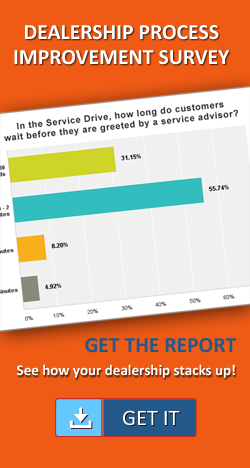HOW DOES CARTRAX WORK?
CarTrax enables retail automotive dealerships to improve sales and customer service performance by detecting, identifying and tracking the location of vehicles throughout the dealership and offsite lots. But How?
Proven, Mature Asset Tracking Technology
Passive RFID technology is by far the most mature and reliable tracking technology available today. It is used extensively in retail, supply chain, logistics and manufacturing processes, electronic toll collection, and it is widely deployed in business settings as well, for secure keycard entry.
The applications are numerous: From theft prevention in retail, to streamlining pick, pack and ship in the supply chain, or tracking materials through manufacturing processes. In fact RFID asset tracking is so popular it is over a $10 billion industry.
RFID for vehicle tracking applications
In RFID vehicle tracking the basic operation is as follows: A small inconspicuous RFID tag, thinner than a stick of gum, is placed on every vehicle in your inventory and on customer vehicles (usually on the inside of the windshield). Now, whenever the vehicle is scanned by a hand-held RFID reader, or a fixed RFID reader mounted at say the entry gate of your lot or your service drive, CarTrax knows where the car was last seen.
Since CarTrax keeps a timestamped log of every last seen event, and has access to other vehicle information through integration with your DMS system, it can instantly deduce what’s going on…e.g. this is a specific customer’s vehicle entering the service drive, or it’s a loaner vehicle being returned, a car being moved from one parking spot to another, or a vehicle exiting one step in the reconditioning process and entering the next…
Inexpensive and Maintenance Free
Alternatives to RFID include GPS, Wi-Fi and Bluetooth tracking devices, but they are expensive ($50-100 per tag) and bulky, need power sources and require regular maintenance. In contrast, RFID tags have no active components, so they don’t require batteries or any type of maintenance. They virtually last forever. Plus RFID tags cost less than $1 each.
Fast, super easy Tag installation
Each RFID tag has a unique identity. When it is attached to a vehicle, the tag is associated with a VIN in the CarTrax software so the system connects that tag with a specific vehicle. The tag is like any other windshield sticker with a light adhesive backing that adheres to the windshield. Physical Tag installation and association only takes about 1 minute per vehicle, and it is so simple, literally anyone can do it – porters, service advisors, technicians and even your managers can do it!.
RFID chips and readers communicate
Inside each RFID tag is a tiny chip – it is actually a micro-computer with a very limited but powerful capability – meaning it can be asked to do something by another computer – in this case an RFID reader. In other words, it can respond to limited set of digital commands transmitted to it over the air. Commands like: Tell me your unique ID; Store this value; Change that value; Tell me the value for this attribute. It’s pretty basic…but extremely effective.
RFID tags don’t store sensitive or private data.
In CarTrax vehicle tracking, an RFID tag only stores its unique identifier which is a long numeric number. The tag does NOT store any other information that would identify the vehicle, the customer, or the dealer. If someone were to read the tag, all they would find is a long number that meant nothing to them. Secure data stays in the dealer’s secure systems like their DMS.
It’s a micro-computer with no power, Huh?
Most computers require power, don’t they? If RFID tags don’t have any power source, how can they possibly communicate with anything? This is the magic of RFID. They do require power to operate, and they get power from radio waves generated by an RFID reader that is within range of the tag. The electromagnetic energy transmitted by the reader energizes the tag with enough juice for it to wake up, and receive and respond to one of those primitive commands mentioned earlier. Once the tag is out of range of a reader or the reader turns off, it goes back to sleep.
When you look at an RFID tag, the micro-computer is about the size of a small tick… all the rest is antenna, the sole purpose of which is to harvest energy from the air waves!
From lot-level to bay-level precision
Typically fixed RFID readers (about the size of a book) are strategically placed throughout the dealership to detect the tags. Readers are often placed at exits and entries to the lot and service drive. But they could be placed anywhere else too. These RFID readers see the tags and send tag IDs to CarTrax to determine the location of vehicles as they move about the dealership. Fixed readers are continually scanning what is around them, so it is automatic. Therefore the more readers you have, the greater visibility you have over where a vehicle is on your lot, without having to do manual scans.
For bay or slot-level precision RFID tags can be set in the concrete or on a post at each location or groups of locations, and each time a vehicle is parked there, the car’s tag and the location tag can be scanned and associated together. That way you have the granularity you want even down to bay or slot-level visibility for any tagged car.
On-the spot Vehicle Identification
Using hand-held readers, you can scan a vehicle at any time. This might be simply to determine the vehicle’s identity and specifications, to do a quick scan of an area to determine the inventory, or it might be part of your process to check-in or check-out the vehicle as it moves between steps in the workshop. CarTrax is so flexible, it is easily configured to work within your existing processes, rather than making you change your processes to fit the way CarTrax works.
By exploiting RFID, CarTrax gives dealerships a better way to interact with customers and streamline operations, without fundamentally changing how you do things. Here are some examples:
Giving customers a warm welcome in Service Drive
In the service department, customer vehicles can be tagged and then when customers come in for service, RFID readers in the service drive detect customer vehicles. CarTrax retrieves customer information from the DMS to enable a warm personal welcome in the service drive. RFID readers placed throughout the service process (parking, shop, express lube, car wash) enable CarTrax to update advisors and customers of the progress via displays and text messages. This can include notification to the sales team to welcome the customer back and possibly put them in a new car to drive home.
Being able to locate any available inventory in seconds
When vehicles on the lot are tagged, CarTrax enables a very fast inventory process that can determine the location of a vehicle to a particular space. This enables the dealership to perform inventory and location so fast, that it can be done as frequently as needed. This provides a great value to your bank and accounting department but the real value of this information is in the sales process. With CarTrax, sales staff and customers can immediately find the particular vehicle a prospective buyer came in to see, without subjecting them to an exasperating wait while you track down the vehicle.
Reducing time-to-market for trade-in reconditioning
When used vehicles are taken in on trade, readers located in the re-conditioning areas enable CarTrax to track the reconditioning process and automate fast hand offs between the different steps such as mechanical, windshield, paint, interior, detailing, and photos. CarTrax software replaces spreadsheets and ad-hoc communication with an organized recon process that keeps everyone up to date with real-time status that is accessible from any computer or device.



